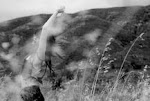
I've been away on a little trip and I've had time to think and time to listen. I've come across some interesting people and read some great articles on love and relationships that I want to share with you.
Freud said that when we fall in love, we fall for a reflection of ourselves. We love, in the other person, those aspects that are very similar to ours. Love, for Freud, is illusory and based on narcissism. Of course that kind of love only lasts for a while but, how do we continue to love our partner once we are past that stage? Love, as we know, has to evolve, to mature. Jacques Lacan said that love is giving our partner what we don't have. Which means: to love is to recognize your lack and give it to the other, place it in the other. It’s not giving what you possess, goods and presents, it’s giving something else that you don’t possess, which goes beyond you. Our own flaws are involved and that is how we love, with our flaws. He also stated that we love someone who really isn't who we think he is, reminding us to be aware that a lot of narcissism goes into love.
Nick Paumgaiten wrote in "Looking for Someone" in The New Yorker Magazine, an article referred to contemporary love and the ways people use the internet in search of a companion. He comments on the work of Gian Gónzaga who runs a site called eHarmony. It seems that this site, which is used to pair people up, was born after many years of interviewing couples. By watching the way they interact, they can predict wether the relationship is going to work out or not. They look for specific traits: How do you treat your partner? How are your comments? Are they positive? Are they negative? Are they assuring? Do you underestimate your partner? Do you use humor in order to bring up issues that trouble you? Can you use humor in a positive way? Can you create constructive solutions to your issues? Do you have problems solving skills? Who has them? One? or both?
They say that sometimes, you mate with someone you think is right for you but in reality he or she is not. All goes well until some kind of incompatibility arises: "Incompatibility can often be unperceivable until a couple is subjected to some kind of difficulty of the world's devising: problems involving health, money, children or work". They blame stress for it, of course, but I see it with a different light: situations start becoming more real, narcissism fades away with time. What now? I think it is at this point where a lot of couples split up. They trick themselves into thinking they will be better off alone or with someone that will provide another narcissistic high for them.
Dan Savage, expresses his view in July 3rd, New York Times Sunday Magazine article "Infidelity Keeps us Together". He argues that in his relationship what has kept him bound to his partner was his and her honesty and allowing each other to have sex encounters with other people from time to time.
Dan Savage writes a column for Seattle's The Stranger, called "Savage Love", very contemporary indeed but my thinking is more along the line of Lisa Appignanesi's, author of "All about Love". In an interview in this month's issue of Elle Magazine by Ben Dickinson, she says: "Marriage is interesting now because we want so much out of it, and it's strains are therefore telling, so we develop huge resources of invention and patience and durability to make it work ... You don't want to just say 'Nothing is good if it doesn't have a positive ending or it's only good if it's easy and smooth and always happy'".
In this space, we are always looking out for people that we consider that stand out in their personal fulfillment, we have mainly written about artists. We think that we, as human beings, are the only ones in command of the relationships we seek, we build, we nourish, we surround ourselves with. Once we find the right match, it is up to us to drive the relationship to its best state and because the skills it requires, anyone that believes to be constantly contributing in that sense, we consider an achiever (no need to be famous, just proud). Cheers to you then.
Post: Vale Mendez Cañas
Photo: Mich




























